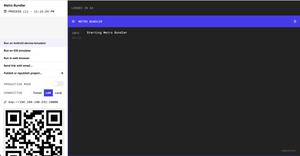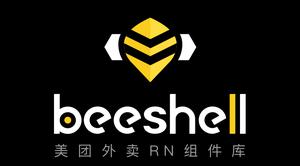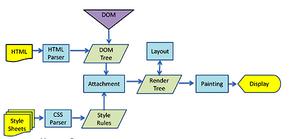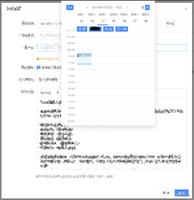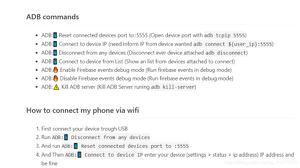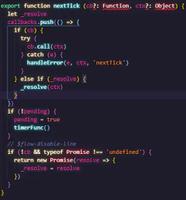关于React前端构建的一般过程 - 理论篇

本文以个人阅读实践经验归纳前端架构构建过程,以Step by Step方式说明创建一个前端项目的过程。并会对每个阶段所使用的技术进行可替代分析,如Express替换Hapi或者Koa的优缺点分析。本文仅供参考。
流程
1. Package.json
首先,我们需要创建package.json文件。对设计初期已知的引用包和依赖包进行管理,使用ES6的,需要设置babel。其次编写脚本命令。一般文件形式如下:
{ "name": "practice",
"description": "Ryan Project",
"version": "1.0.0",
"main": "server.js",
"scripts": {
"start": "node server.js",
"watch": "nodemon server.js"
},
"babel": {
"presets": [
"es2015",
"react"
]
},
"dependencies": {
"alt": "^0.17.8",
"async": "^1.5.0",
"body-parser": "^1.14.1",
"colors": "^1.1.2",
"compression": "^1.6.0",
"express": "^4.13.3",
"history": "^1.13.0",
"mongoose": "^4.2.5",
"morgan": "^1.6.1",
"react": "latest",
"react-dom": "latest",
"react-highcharts": "^10.0.0",
"react-router": "^1.0.0",
"request": "^2.65.0",
"serve-favicon": "^2.3.0",
"socket.io": "^1.3.7",
"swig": "^1.4.2",
"underscore": "^1.8.3",
"xml2js": "^0.4.15"
},
"devDependencies": {
"babel-core": "^6.1.19",
"babel-preset-es2015": "^6.1.18",
"babel-preset-react": "^6.1.18",
"babel-register": "^6.3.13",
"babelify": "^7.2.0",
"bower": "^1.6.5",
"browserify": "^12.0.1",
"gulp": "^3.9.0",
"gulp-autoprefixer": "^3.1.0",
"gulp-concat": "^2.6.0",
"gulp-cssmin": "^0.1.7",
"gulp-if": "^2.0.0",
"gulp-less": "^3.0.3",
"gulp-plumber": "^1.0.1",
"gulp-sourcemaps": "^1.6.0",
"gulp-uglify": "^1.4.2",
"gulp-util": "^3.0.7",
"optimize-js": "^1.0.0",
"vinyl-buffer": "^1.0.0",
"vinyl-source-stream": "^1.1.0",
"watchify": "^3.6.0"
},
"license": "MIT"
}
输入完成后,运行npm install,将package.json中的包安装到项目目录中,存放于对应node_modules文件夹
2. Server.js
即服务端,可以使用Express、Koa、Hapi等方式去创建服务端,设置服务端口。也可以设置socket相关的工作。
Express创建服务端
var express = require('express');
var app = express();
//创建路由
app.get('/', function(req, res) {
res.send('Hello world');
});
//创建REST API
var router = express.Router();
router.route('/items/:id')
.get(function(req, res, next) {
res.send('Get id: ' + req.params.id); })
.put(function(req, res, next) {
res.send('Put id: ' + req.params.id); })
.delete(function(req, res, next) {
res.send('Delete id: ' + req.params.id); });app.use('/api', router);
var server = app.listen(3000, function() {
console.log('Express is listening to http://localhost:3000');
});Koa创建服务端
var koa = require('koa');var app = koa();
//创建路由
app.use(function *() {
this.body = 'Hello world';
});
//创建REST API
app.use(route.get('/api/items', function*() { this.body = 'Get'; }));
app.use(route.post('/api/items', function*() { this.body = 'Post'; }));
app.use(route.put('/api/items/:id', function*(id) { this.body = 'Put id: ' + id; }));
app.use(route.delete('/api/items/:id', function*(id) { this.body = 'Delete id: ' + id; }));
var server = app.listen(3000, function() {
console.log('Koa is listening to http://localhost:3000');
});
Hapi创建服务端
var Hapi = require('hapi');var server = new Hapi.Server(3000);
server.route({
method: 'GET',
path: '/',
handler: function(request, reply) {
reply('Hello world'); } });
server.route([
{ method: 'GET', path: '/api/items', handler: function(request, reply) { reply('Get item id'); } },
{ method: 'GET', path: '/api/items/{id}', handler: function(request, reply) { reply('Get item id: ' + request.params.id); } },
{ method: 'POST', path: '/api/items', handler: function(request, reply) { reply('Post item'); } },
{ method: 'PUT', path: '/api/items/{id}', handler: function(request, reply) { reply('Put item id: ' + request.params.id); } },
{ method: 'DELETE', path: '/api/items/{id}', handler: function(request, reply) { reply('Delete item id: ' + request.params.id); } },
{ method: 'GET', path: '/', handler: function(request, reply) { reply('Hello world'); } } ]);
server.start(function() {
console.log('Hapi is listening to http://localhost:3000');
});
三者间优缺点比较
| 优点 | 缺点 | |
| Express | 庞大的社区,相对成熟。极易方便创建服务端,创建路由方面代码复用率高 | 基于callback机制,不可以组合使用,也不能捕获异常 |
| Koa | 相比Express,移除Route和View,中间件的使用移植和编写都比较方便,拥抱ES6, 借助Promise和generator而非callback,能够捕获异常和组合使用 | 以Express一样,需要routers中间件处理不同的选择 |
| Hapi | 基于配置而非代码的框架,对于大型项目的一致性和可重用性比较有用。 | 为大型项目定制,导致在小项目中,常见的过于形式化的代码。相关的开源资料也比较少 |
3. 工程化工具
首先,我们需要先设计好我们项目的目录结构,以便使用工程化工作进行压缩打包等操作。
简单举例如下项目的结构
--/public--/css
--/js
--/fonts
--/img
--/app
--/actions
--/components
--/stores
--/stylesheets
--main.less
--alt.js
--route.js
--main.js
其次,需要webpack或者browserify工具,打包压缩一系列的脚本文件。使用babel转换ES6语法,因为绝大部分的浏览器还不支持ES6,所以需要转换为ES5。最后,创建gulpfile.js文件,使用gulp创建系列的工程指令,如绑定vendor文件、引用sourcemap、使用类似uglify、gulp-cssmin等辅助压缩文件。
如下是简易的gulpfile.js文件的配置
var gulp = require('gulp');var gutil = require('gulp-util');
var gulpif = require('gulp-if'); //conditionally run a task
var autoprefixer = require('gulp-autoprefixer'); //Prefix CSS
var cssmin = require('gulp-cssmin');
var less = require('gulp-less'); //Less for Gulp
var concat = require('gulp-concat');
var plumber = require('gulp-plumber'); //Prevent pipe breaking caused by errors from gulp plugins
var buffer = require('vinyl-buffer'); //convert streaming vinyl files to use buffers
var source = require('vinyl-source-stream'); //Use conventional text streams at the start of your gulp or vinyl pipelines
var babelify = require('babelify');
var browserify = require('browserify');
var watchify = require('watchify');
var uglify = require('gulp-uglify'); //Minify files with UglifyJS.
var sourcemaps = require('gulp-sourcemaps');
var production = process.env.NODE_ENV === 'production'
var dependencies = [
'alt',
'react',
'react-dom',
'react-router',
'underscore'
]
/*
|--------------------------------------------------------------------------
| Combine all JS libraries into a single file for fewer HTTP requests.
|--------------------------------------------------------------------------
*/
gulp.task('vendor', function () {
return gulp.src([
'bower_components/jquery/dist/jquery.js',
'bower_components/bootstrap/dist/js/bootstrap.js',
'bower_components/magnific-popup/dist/jquery.magnific-popup.js',
'bower_components/toastr/toastr.js'
]).pipe(concat('vendor.js'))
.pipe(gulpif(production, uglify({mangle: false})))
.pipe(gulp.dest('public/js'))
})
/*
|--------------------------------------------------------------------------
| Compile third-party dependencies separately for faster performance.
|--------------------------------------------------------------------------
*/
gulp.task('browserify-vendor', function(){
return browserify()
.require(dependencies)
.bundle()
.pipe(source('vendor.bundle.js'))
.pipe(buffer())
.pipe(gulpif(production, uglify({mangle: false})))
.pipe(gulp.dest('public/js'))
})
/*
|--------------------------------------------------------------------------
| Compile only project files, excluding all third-party dependencies.
|--------------------------------------------------------------------------
*/
gulp.task('browserify',['browserify-vendor'], function(){
return browserify({entries:'app/main.js', debug: true})
.external(dependencies)
.transform(babelify, {presets: ['es2015','react']})
.bundle()
.pipe(source('bundle.js'))
.pipe(buffer())
.pipe(soucemaps.init({loadMaps: true}))
.pipe(gulpif(production, uglify({mangle: false})))
.pipe(sourcemaps.write('.'))
.pipe(gulp.dest('public/js'))
})
/*
|--------------------------------------------------------------------------
| Same as browserify task, but will also watch for changes and re-compile.
|--------------------------------------------------------------------------
*/
gulp.task('browserify-watch', ['browserify-vendor'], function(){
var bundler = watchify(browserify({ entries:'app/main.js', debug: true}), watchify.args)
bundler.external(dependencies)
bundler.transform(babelify, {presets: ['es2015', 'react']})
bundler.on('update', rebundle)
return rebundle()
function rebundle() {
var start = Date.now()
return bundler.bundle()
.on('error', function(err){
gutil.log(gutil.colors.red(err.toString()))
})
.on('end', function() {
gutil.log(gutil.colors.green(`Finished rebundling in ${(Date.now() - start)} ms`))
})
.pipe(source('bundle.js'))
.pipe(buffer())
.pipe(sourcemaps.init({loadMaps: true}))
.pipe(sourcemaps.write('.'))
.pipe(gulp.dest('public/js'))
}
})
gulp.task('styles', function(){
return gulp.src('app/stylesheets/main.less')
.pipe(plumber())
.pipe(less())
.pipe(autoprefixer())
.pipe(gulpif(production, cssmin()))
.pipe(gulp.dest('public/css'))
})
gulp.task('watch', function(){
gulp.watch('app/stylesheets/**/*.less', ['styles'])
})
gulp.task('default', ['styles','vendor','browserify-watch','watch'])
gulp.task('build', ['styles', 'vendor', 'browserify'])
View Code
Gulp Task所做的操作如下说明:
Gulp Task | 说明 |
Vendor | 将所有第三方的js类库合并到一个文件 |
Browserify-vendor | 将package.json中dependencies的依赖模块buffer化,以提供性能 |
Browserify | 编译和绑定只与app相关的文件(无依赖项),并引用sourcemap对应、uglify压缩、buffer优化、babel转化ES6 |
Browserify-watch | 利用watchify监测bundle.js文件的变化,并重新编译 |
Styles | 编译less样式文件,自动添加前缀 |
Watch | 监测Less文件,发生变化重新编译 |
Default | 运行以上所有任务,且进程挂起监控watch |
Build | 运行以上所有任务,退出 |
4. 其他包管理(可无)
bower包管理工具的引入。由于NPM主要运用于Node.js项目的内部依赖包管理,安装的模块位于项目根目录下的node_modules文件夹内。并且采用嵌套的依赖关系树,即子依赖包各自有自己的依赖关系树,并不会造成他们之间的冲突。但是这种情况在纯前端的包管理就不那么友好了,比如你使用多个jquery版本。在使用方面npm主要用于管理类似grunt,gulp, ESlint,CoffeScript等npm模块。而bower管理纯前端css/js的包,比如jquery, bootstrap
使用步骤
1. 创建bower.json文件,将依赖包添加进(作用跟package.json类似)
{ "name": "practice",
"dependencies": {
"jquery": "^2.1.4",
"bootstrap": "^3.3.5",
"magnific-popup": "^1.0.0",
"toastr": "^2.1.1"
}
}
2. 运行
npm install bower -g
bower install
5. 渲染部件
在渲染部分,React提供了客户端、服务端的渲染方式。具体区别如下:
1. 客户端渲染:
可以直接在浏览器运行ReactJS,这是通用的比较简单的方式,网上也有很多例子。http://reactjs.org。服务端只创建初始化的html,装载你的组件UI,提供接口和数据。前端做路由与渲染的工作。缺点就是用户等待时间长。
2. 服务端渲染:
html从后端生成,包含所有你的组件脚本UI以及数据。可以理解为生成一个静态的结果集页面。响应快,体验好。主要运用于提高主屏性能和SEO。服务端渲染,需要消耗CPU,但可以借助缓存实现优化。React中,通过renderToStaticMarkup方法实现。并且,你还需要保留对应的State以及所需要的数据。
例子援引如下开源项目,有兴趣的朋友可以去了解下。
http://sahatyalkabov.com/create-a-character-voting-app-using-react-nodejs-mongodb-and-socketio/
以React-Router为例(客户端)
1. 创建app/component/App.js
首先创建组件的容器app,this.props.children用于渲染其他组件
import React, {Component} from 'react'class App extends Component {
render() {
return (
<div>
{this.props.children}
</div>
);
}
}
export default App
2. 创建app/routes.js
如下点,指定路由/和/add,对应Home和AddCharacter组件
import React from 'react'import {Route} from 'react-router'
import App from './components/App'
import Home from './components/Home'
import AddCharacter from './components/AddCharacter';
export default (
<Route component ={App} >
<Route path= '/' component={Home} />
<Route path= '/add' component={AddCharacter} />
</Route>
)
3.创建main.js
将Router组合的组件渲染到id为app的div里。
import React from 'react'import Router from 'react-router'
import ReactDOM from 'react-dom'
import { createHistory } from 'history'; // you need to install this package
import routers from './routes'
let history = createHistory();
ReactDOM.render(<Router history={history}>
{routers}
</Router>, document.getElementById('app'))
5. app/components/添加home组件
Import React from ‘react’Class Home extends React.Component{
Render(){
Return (
<div className =’home’>
Hello </div>)
} }
Export default Home
6. 组件
app/component/添加AddCharacter组件
View Code
这里采用的是alt(基于Flux)第三方库,所以还需要添加Actions和Store,以及alt.js文件。这里不一一列举,可以查看上面的源码地址。
Tip: 也可以使用react-redux来构建我们自己的app组件,redux能更好的管理react的state。
7. 数据库
创建数据库数据,如果你是单页应用,那么建议使用mongoDB。具体实现不再一一描述,可以上网搜索相关内容
8. API
如果是基于mongoose的话,则只需要利用上面的Express、Koa或者Hapi创建API,访问mongoose数据.
如果是大型项目,有自己独立的后端语言,如C#或者Java。则可以基于微服务框架创建服务API。使用axios或者superagent等库访问数据。
参考文献
http://sahatyalkabov.com/create-a-character-voting-app-using-react-nodejs-mongodb-and-socketio/
http://stackoverflow.com/questions/27290354/reactjs-server-side-rendering-vs-client-side-rendering
http://stackoverflow.com/questions/18641899/what-is-the-difference-between-bower-and-npm
https://ifelse.io/2015/08/27/server-side-rendering-with-react-and-react-router/
https://www.airpair.com/node.js/posts/nodejs-framework-comparison-express-koa-hapi
以上是 关于React前端构建的一般过程 - 理论篇 的全部内容, 来源链接: utcz.com/z/382448.html

